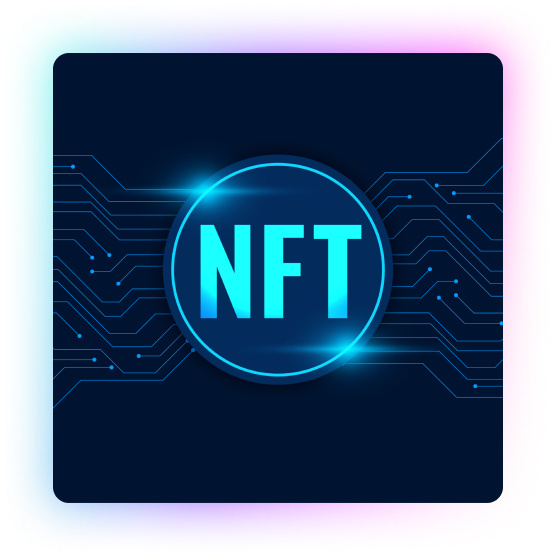Innovation in Finance
The finance industry is experiencing a profound shift with the adoption of blockchain technology, which has opened new avenues for transparency and security. Meanwhile, artificial intelligence is optimizing trading strategies, enhancing fraud detection, and personalizing financial services.
Entrapeer Powers Fintech Leaders
clients to date
experience
research reports
media sources
Decentralized Finance
Decentralized Finance (DeFi) is reshaping finance, allowing consumers to control their financial transactions through blockchain and cryptocurrency. It offers advantages like lower fees, swift transactions, decentralized exchanges, stablecoins, NFTs, and flash loans. However, DeFi carries risks, including a lack of consumer protections and vulnerability to hacking. While it’s unlikely to replace traditional banks, its rapid evolution underscores its permanence in finance.


Know Your Customer
KYC, or “Know Your Customer,” is the crucial process banks and financial institutions use to verify customer identities and the legality of their actions. It involves identity verification and ongoing monitoring to safeguard against money laundering and illegal activities. Three key components include confirming identity, conducting customer due diligence, and ongoing monitoring for higher-risk customers.
KYC’s popularity is growing due to the rise of financial crime, increased global connections, and the pandemic’s shift to contactless services. Electronic KYC (eKYC) streamlines these processes digitally by enhancing efficiency and safety, making it a crucial trend in the digital age.
Add Your Heading Text Here
Lorem ipsum text lorem text.
Lorem ipsum dolor sit amet consectetur lorem text pulvinar maecenas leo curae.

Subscription Economy
The subscription economy is transforming business models, shifting away from pay-per-product towards recurring subscriptions, offering flexibility and access to products and services. This trend is thriving, especially during the COVID-19 crisis, as subscription-based businesses adapt well. The future of this model relies on four key questions: what to sell, to whom, how to sell, and how to monetize. Success in this economy depends on customer-centricity, constant innovation, and delivering value. Risks include confusing traditional and subscription models, failing to provide value, and lacking the necessary technology infrastructure. Discover more about this dynamic business shift in the full article.


Financial Access for Unbanked & Underbanked Populations
Unbanked and underbanked populations, those without traditional bank accounts or with limited access, face significant financial challenges. The number of unbanked households has been decreasing, but many still need access to banking services. Decentralized Finance (DeFi) offers a promising solution, enabling financial services through blockchain without the need for intermediaries like banks. DeFi provides benefits such as control, reduced fees, and accessibility, particularly benefiting low-income individuals. However, it also comes with risks, including smart contract vulnerabilities and identity theft. DeFi has the potential to empower the underserved and reduce financial inequality, making it a critical trend in modern finance.
Embedded Finance vs. Banking as a Service
Embedded Finance seamlessly integrates financial tools into various platforms, simplifying payments, lending, and insurance. In contrast, BaaS empowers non-banks to provide banking products and features through licensed access, creating virtual banks with user-friendly interfaces. These innovations bring convenience, but they also raise concerns such as data breaches and liability allocation risks. To delve deeper into this transformative financial landscape, explore the full blog.

Non-Fungible Tokens
NFTs, or non-fungible tokens, are unique cryptographic assets stored on blockchains, such as Ethereum, and they represent a wide array of items from art to virtual avatars. They offer artists and content creators new ways to monetize their work, including royalties on secondary sales. Major companies like Adidas and McDonald’s have embraced NFTs for marketing and customer engagement. However, investing in NFTs comes with risks, including price volatility, wash trading, impersonations, and rug pulling. Understanding these risks is essential for those looking to explore the exciting but volatile world of NFTs.

Recent Finance Blogs
Unlock New Revenue as Telcos Leverage Fintech for Growth
4 Fintech Trends to Watch at Money20/20 Europe
Web Summit Events Come to Qatar: Exploring Finance, Automotive, and Renewable Energy in the MENA Region
Decentralized Finance Applications
Embedded Finance vs. Banking as a Service
FAQ
There are numerous ways that startups and enterprises can collaborate, but the method gaining the most traction in recent years is through innovation partnerships.
Both parties benefit because the startup gains access to a new testing ground for their technologies and services, while the enterprise can leverage the agility and ingenuity of startups to unlock new business opportunities.
Startup-corporate partnerships vary depending on the project and its duration; however, there are two main strategies: plug-and-play or POC/pilot projects.
With a plug-and-play solution, the startup simply “plugs” their technology into the corporation’s existing infrastructure, and it’s off to the races. This typically applies to straightforward, one-size-fits-all products/services with a successful track record.
The second method – conducting a proof of concept (POC) or pilot project – tends to be much more collaborative. The roles and responsibilities of both parties vary depending on the project scope; however, startups and corporates usually work closely together to adopt the startup’s solution to the enterprise’s needs. This method may require multiple iterations since both startups and enterprises are entering uncharted waters.
Even the smallest startup can partner with Fortune 500 companies – so long as there is a good use case/product fit. By this, we mean that the startup must demonstrate how their product/service provides the perfect solution for the particular challenge an enterprise faces.
Corporates and multinationals benefit from working with startups because startups are generally more agile and innovative. When corporates find the right startup partner, such collaboration can result in novel products, new revenue streams, diversification opportunities, and more.





